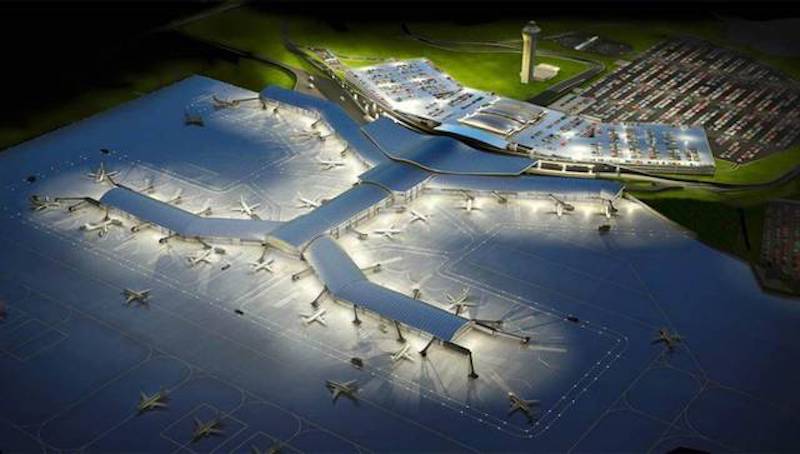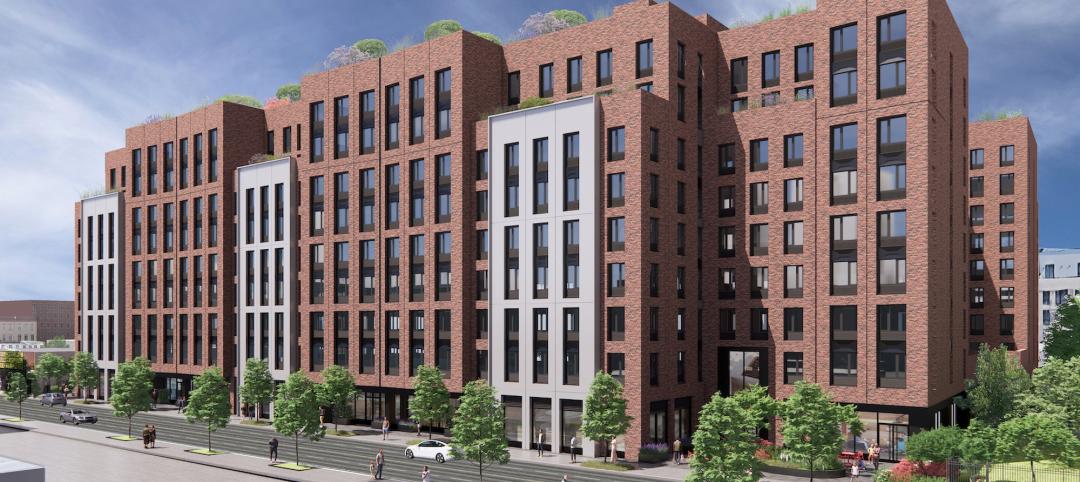America’s crumbling infrastructure might finally be getting the attention and funding it needs. But how best to rebuild that infrastructure, and who will pay for it, are shaping up to be contentious debates among the country’s two political parties and its newly elected president, who has identified infrastructure building as one of his administration’s priorities, and has singled out 50 projects that could receive immediate funding boosts.
President Trump’s team has provided the National Governors Association with a list of 50 “Emergency & National Security” infrastructure projects across the country that are in various stages of engineering, permitting and funding. The document, which the Kansas City Star and other news outlets have obtained and published, estimates that at least half of the $137.5 billion in total investment for those projects would be paid for by private investors. The document estimates that the projects would create 193,350 direct jobs and 241,700 indirect jobs over an indeterminate period of years.
Not surprisingly, Trump favors projects that are upgrading or rebuilding roads, bridges, rail- and waterways, and hydro plants. (At least six projects identified in the document are upgrades of existing systems of locks and dams.) A number of projects, such as the M1-Rail in Detroit and the Second Avenue Subway in New York, are already pretty far along in their engineering, permitting, and financing.
Energy projects are prioritized, too, such as $5 billion for the Chokecherry and Sierra Madre wind farm in Wyoming, and between $4.5 billion and $5 billion for the Atlantic Coast Pipeline that serves multiple utilities in Virginia and North Carolina.
A number of nonresidential construction and reconstruction projects are on the list, including the modernization of Union Station in Washington D.C., an $8.7 billion public-private project that, according to the document, would serve as a model for other multimodal terminals around the country. (The Chicago Union Station Redevelopment would get $1 billion, according to the document.)
Another $972 million would be allocated for a new centralized terminal replacing Terminal A at Kansas City Airport, for which Southwest and other airlines have already committed nearly $1 billion. One billion dollars would go toward expanding Seattle’s Airport. And $1.8 billion would support the St. Louis Airport Commission’s recent approval of a major development project at Lambert-St. Louis International Airport.
This document became public as President Trump, through executive orders, was moving to restart the construction of the Keystone XL Pipeline and the Dakota Access Pipeline, which President Obama halted over environmental concerns.
Another executive order directs federal resources toward building a massive wall along the 1,954-mile U.S.-Mexico border. The Government Accountability Office estimates that a single-layer fence would cost $6.5 million per mile, plus another $4.2 million per mile for supporting roads and fencing. CNN, quoting estimates by civil engineers and architects, reports that a wall made from precast cement panels and reinforced steel supports (not unlike the sound barriers along highways), 20 feet high and five feet below ground, could cost $10 billion and take most of Trump’s first term to complete.
Trump has insisted, both on the campaign trail and in office, that Mexico would pay for this wall. The New York Times this morning reports that Team Trump is considering plans that would divert foreign aid to Mexico toward paying for the wall construction.
Trump contends that the infrastructure spending proposed in the document released to the governors association, which would be primarily in the form of tax credits to investors, would “unlock” $1 trillion in private-sector spending.
Indeed, who pays, and which infrastructure projects get precedence, will be hot topics going forward. The Democrats have unveiled a $1 trillion proposal that relies heavily on new government spending, and is projected to create 15 million jobs over 10 years. Reuters reports that the Senate Democrats’ plan includes $210 billion to rebuild roads and bridges, $110 billion for water and sewage projects, $180 billion for rail and bus systems, and $75 billion to rebuild schools.
That plan has already been rejected by Senate Majority Leader Mitch McConnell, who led the opposition against President Obama’s 2009 economic stimulus legislation that included funding for infrastructure rebuilding. House Speaker Paul Ryan (R-Wis.) is on record saying that any infrastructure plan should have $40 of private-sector spending for every $1 of public spending.
On the other hand, Sen. Chuck Schumer (D-NY), the Senate Democratic leader, has stated that his party can’t accept the tax-credit scheme that Trump has proposed for infrastructure rebuilding, which he characterized as “tax credits for developers.”
Related Stories
MFPRO+ News | Jul 22, 2024
6 multifamily WAFX 2024 Prize winners
Over 30 projects tackling global challenges such as climate change, public health, and social inequality have been named winners of the World Architecture Festival’s WAFX Awards.
Mass Timber | Jun 10, 2024
5 hidden benefits of mass timber design
Mass timber is a materials and design approach that holds immense potential to transform the future of the commercial building industry, as well as our environment.
Urban Planning | May 28, 2024
‘Flowing’ design emphasizes interaction at Bellevue, Wash., development
The three-tower 1,030,000-sf office and retail development designed by Graphite Design Group in collaboration with Compton Design Office for Vulcan Real Estate is attracting some of the world’s largest names in tech and hospitality.
Adaptive Reuse | Apr 29, 2024
6 characteristics of a successful adaptive reuse conversion
In the continuous battle against housing shortages and the surplus of vacant buildings, developers are turning their attention to the viability of adaptive reuse for their properties.
Sports and Recreational Facilities | Apr 2, 2024
How university rec centers are evolving to support wellbeing
In a LinkedIn Live, Recreation & Wellbeing’s Sadat Khan and Abby Diehl joined HOK architect Emily Ostertag to discuss the growing trend to design and program rec centers to support mental wellbeing and holistic health.
Affordable Housing | Jan 16, 2024
Construction kicks off on $237.9 million affordable housing project in Brooklyn, N.Y.
Construction recently began on an affordable housing project to create 328 units for low-income and formerly homeless populations in Brooklyn, N.Y.
Healthcare Facilities | Jan 7, 2024
Two new projects could be economic catalysts for a central New Jersey city
A Cancer Center and Innovation district are under construction and expected to start opening in 2025 in New Brunswick.
Biophilic Design | Oct 4, 2023
Transforming the entry experience with biophilic design
Vessel Architecture & Design's Cassandra Wallace, AIA, NCARB, explores how incorporating biophilic design elements and dynamic lighting can transform a seemingly cavernous entry space into a warm and inviting focal point.
Affordable Housing | Sep 25, 2023
3 affordable housing projects that serve as social catalysts
Trish Donnally, Associate Principal, Perkins Eastman, shares insights from three transformative affordable housing projects.
Adaptive Reuse | Sep 13, 2023
Houston's first innovation district is established using adaptive reuse
Gensler's Vince Flickinger shares the firm's adaptive reuse of a Houston, Texas, department store-turned innovation hub.

















